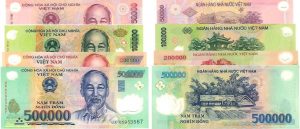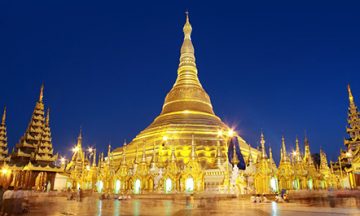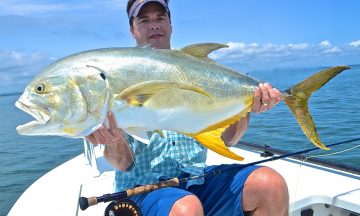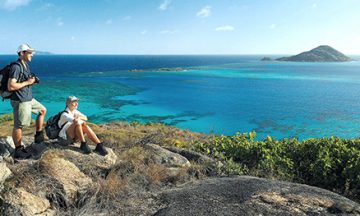VIETNAM VISA SERVICES
What is a ‘Visa on Arrival?
| This is most likely the easiest way to obtain your visa without having to chase down embassies, consulates and the like prior to yourtrip. The entry visa will be stamped on your passport at the Visa On Arrival Desk at the International Airport in Vietnam. Then you can pass through the Immigration checking point. With this type of visa, you only can enter the country by air. | 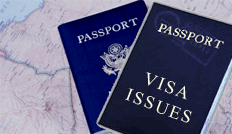 |
How to get a Visa on Arrival?
We get a visa on arrival Approval letter for you from the Vietnam Immigration Department. After obtaining the approval letter, we will forward you a copy by fax or email. Copies of the same document will be forwarded on your behalf to Vietnam Immigration checkpoints at International Airports only, so when you arrive in Viet Nam, the Immigration officers will have those documents on hand and will be able to issue your entry visa at once. Please remember to bring at least 02 photos of passport regulation size (2in x 2in or 4cm x 6cm) and cash (US dollars) for the stamping fees
Requirement to process a visa for you, we need the following informations :
- Your title (Mr./Mrs./Ms.)
- Your name exactly as it appears in your passport
- Date of birth
- Nationality
- Passport No.
- Date of Passport expiration
- Proposed date of arrival
How it works:
After receiving your information and payment (will be advised upon receipt of your information), we will process the visa immediately. You can expect the process to take 2 to 4 working days, and in urgent cases, only 1 to 2 working days.Below is our Service fees and Stamping fees – which you will be required to pay directly at the airport.
Normal Processing : 3 – 4 working days .Urgent Processing : 1 -2 working day/s
Visa on Arrival Fees (correct as of May 2013)
- 25 USD/person for 1-3 month single entry visa.
- 65 USD/person for 1 month (29 days) multiple entry visa.
- 95 USD/person for 30 days to 3 months multiple entry visa.
- 135 USD/person for 6 months or more multiple entry visa.
VIETNAM CURRENCY
Money
Vietnam is still predominantly a cash society – the majority of shops and restaurants, with the exception of international chains and some tourist-orientated places in the big cities, do not accept debit or credit cards, though they can be used in many hotels. The currency in Vietnam is the Dong (VND), and though US dollars are accepted in many popular destinations and attractions, the majority of transactions are conducted in Dong.
Changing cash
In general terms the USD is the most widely and easily exchanged currency in Vietnam, as it is in the majority of Asia, with the Euro as a distant second. British pounds, Canadian dollars or Australian dollars are not widely accepted, and where they are the exchange rate is unfavourable. There is no longer a significant currency black-market in Vietnam, and most hotels offer roughly the same US dollar exchange rate as banks or exchange-desks, making this often the easiest option. USD cash is also required to obtain a Visa-on-Arrival in Vietnam, so we recommend you bring a cash float in USD or at least Euros even if you intend to obtain most of your currency through the ATM network.
Credit / Debit cards
ATMs are now widespread in all but the most remote destinations in Vietnam, and although rates and withdrawal charges will generally be higher than for exchanging cash, this is a reliable and largely secure method of obtaining VND cash.
Traveller’s cheques
Traveller’s cheques will be accepted at major international banks in big cities, but generally not in hotels, and the process may both be more time-consuming and incur higher charges than exchanging cash. These should be USD denominated to ensure the best chance of acceptance, but we would generally not recommend them.
How much money will you need per day of travelling ?
Everybody spends a different amount when they visit. Vietnam can be delightfully inexpensive though, and as eating out is very reasonable this helps keep costs down. Taxis and cyclos are generally reasonable – check with your hotel or guide what they suggest as reasonable as a certain amount of negotiation is often required to get the best rate. As a rough guide we recommend USD 20-35 per person per day as a good amount to cover basic costs on a trip. This should cover your meals, a couple of drinks…Please be aware that drinks onboard cruise vessels at Halong Bay or on the Mekong can be pricey .
FOODS & DRINKS IN VIETNAM
Within tourist areas, a wide range of food acceptable to the international palate is freely available, restaurants are usually clean and menus often have English translations. Elsewhere, the variety is far less, dishes and menus are often unrecognizable and preparation and eating areas are a long way from international standards of hygiene. Having said that, few visitors seem suffer food-related illnesses during their stay!
Apart from the most expensive establishments, hotel food is nearly always offered as a buffet with a mixture of Asian and international dishes. Although the quality may be good, the variety is often unimaginative. We usually leaves you to your own devices in your meals so that you can choose the type of food and level of restaurant that you prefer.
We also offer an ‘eat street’ alternative in Hanoi, whereby you can sample the bewildering array of specialist pavement ‘cafés’. Our staff will be pleased to accompany you to the places where the locals eat – the food will be wholly authentic, delicious and cost a fraction of restaurant prices.
Don’t expect Western-style ‘hygiene’ though – however, we’ve taken plenty of our guests to ‘eat street’ without a single stomach upset! On tours including meals, we use the best available restaurants. In remote areas without suitable restaurants, picnic meals will be provided.
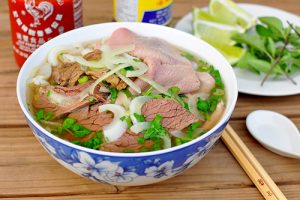 | 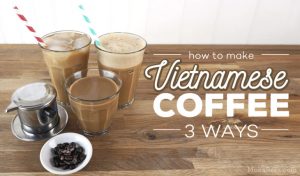 |
Food :
Vietnamese food is mostly nutritious and healthy. Cooking methods are confined to grilling, frying, boiling and steaming, as ovens are not used. The staple is rice, either as grain or flour. The cuisine varies according to the region. In the North, it is comparatively bland, with a strong Chinese influence. Food in the Hue area is spicier, with some French touches. In the South, dishes with hot spices proliferate. Each area has its own local specialities.
Drinks:
Vietnam has wide variety of soft drinks, ranging from ‘Coke’ and ‘Pepsi’ produced here under licence to locally produced fizzy drinks and ‘energy-boosting’ concoctions. Fruit juices are ubiquitous, ‘nuoc chanh’ (water, lemon juice and sugar) being very popular. Fresh orange juice and other sweet fruits are sometimes served with added sugar or salt – watch the person making it and stop them if necessary. Also very popular with visitors are fruit ‘shakes’: chopped fruit with ice, water and milk frothed up in a blender.
Vietnamese coffee is mostly grown in the Central Highlands. Robusta is the usual variety served in Vietnamese establishments – black, thick, and very strong. The minority of Vietnamese people who drink coffee usually mix it with condensed milk – definitely an acquired taste for most foreign visitors. In the cities, smoother Arabica coffee and fresh milk is becoming popular.
For Vietnamese coffee look for the sign ‘Trung Nguyen’ – they are franchised cafés, very common throughout Vietnam. For Western-style coffee, visit the tourist areas
A curious, and expensive, variety is ‘Weasel Coffee’. Arabica beans are fed to a weasel. They pass though the animal’s digestive system, are excreted whole, collected, and processed. The passage of the beans through the creature’s intestines is supposed to create a more mellow flavour.
Vietnamese tea is mainly green, sometimes with flavourings, and drunk without milk or sugar from small handle-less cups. This is the drink traditionally offered to people visiting families, friends, offices, shops and so on. Black tea is also popular, but drunk without milk. If you want a traditional cup of tea with milk, stick to the tourist areas – elsewhere you’re likely to end up with lukewarm water with a tea bag and condensed milk.
The range of alcoholic drinks in Vietnam is limited. Apart from expensive imported wines and spirits, most drinks available are domestically produced variations on rice wine, or lager-type beer. Rice wine is drunk neat, often direct from the fermentation jar via a bamboo straw, or distilled into a spirit, usually mislabelled as ‘vodka’. The wine is also used as a base for the addition of plants, barks or animals. These are usually drunk for their ‘medicinal’ purposes – snake wine is very popular with men who believe it enhances virility.
In the North, ‘medicinal’ wines and spirits can be found easily – definitely worth a tasting session. In Hanoi, there is a restaurant that specialises in fruit wines and liqueurs from the hill tribe villages – our staff will be pleased to escort you and help you to return to your hotel.
Beer comes as variations of locally-brewed French-style lager, and as ‘bia hoi’. Also known as ‘fresh beer’, bia hoi is relatively low in alcohol, produced daily, and served ice-cold. It’s cheap, ubiquitous and delicious on a hot day!
DOS & DON’T IN VIETNAM
Vietnam is a friendly and safe place to travel. With a sprinkling of common sense, your trip should be smooth and trouble free. Tourists usually complain about over-aggressive street vendors, tour operators with a bad attitude and dangerous driving. However, with a cool head and sensible planning, one can avoid these problems.
DO’S
- Greetings are no different to western countries, there are no cultural formalities that as a foreginer you would be expected to know or practise. Vietnamese dress conservatively.
- Despite the heat, it’s best not to show off too much skin. If you do, especially girls, you’ll only draw stares from the locals. Dress well when visiting pagodas. No shorts or tatty beer t-shirts. Shoes are fine, and rarely will you have to remove them. If unsure, just follow what the locals do. Drink plenty of bottled water, especially when walking around sightseeing.
- No need to carry huge bottles around with you, a vendor is never far away and no doubt they will find you before you find them. Keep your cash, credit cards, airline tickets and other valuables in a safe place. Travel with recommend tour agencies. Even if you plan to buy tickets when in country, research your journey a little first on the Internet. A good resource is Lonely Planet’s Thorn Tree Forum, where fellow tourists discuss travel in Vietnam. This way you avoid unreliable tour agencies and badly run hotels. Use waterproof sun cream if you plan to spend a good amount of time in the water when you travel to Vietnam Do some researching before changing money so that you are aware of the existing rates. Change money from a recognized moneychanger.Indulge in some haggling while buying goods without price tags whenever you go shopping in Vietnam.
DON’T
- Wear a lot of jewellery or take a bag with you. Violent crime is highly unusual in Vietnam, but petty crime is more apparant. If you have a bag, or tout a digital camera around your neck, you are a potential target.
- When taking a ride by motorbike taxi (xe om) make sure your bag, if any, is not on display or easy to grab. Bag snatches, although still rare, are probably the most likely crime a tourist would encounter, and it raises the probability immensely if you are tailing a camera or a laptop in the wind. Don’t wear singlets, shorts, skirts or dresses, or revealing clothes to temples or pagodas. Physical displays of affection between lovers in public are frowned upon. That’s why you may come across couples holding hands but not hugging or kissing. Losing your temper in Vietnam means a loss of face. Keep a cool head and remain polite, you’ll have a greater chance of getting what you want. Remember, this is Vietnam, a devloping country, and things don’t quite work as you are maybe used to. Don’t be paranoid about your safety, just be aware of your surroundings.
The above advice is meant to help you have a perfect trip to Vietnam.


